Common wetland wildflowers to spot in spring and summer
If you visit a WWT reserve in the spring or summer, you’ll see a huge range of wildflowers blooming. Here is a quick guide to some common (and more uncommon) wetland wildflowers you might see.
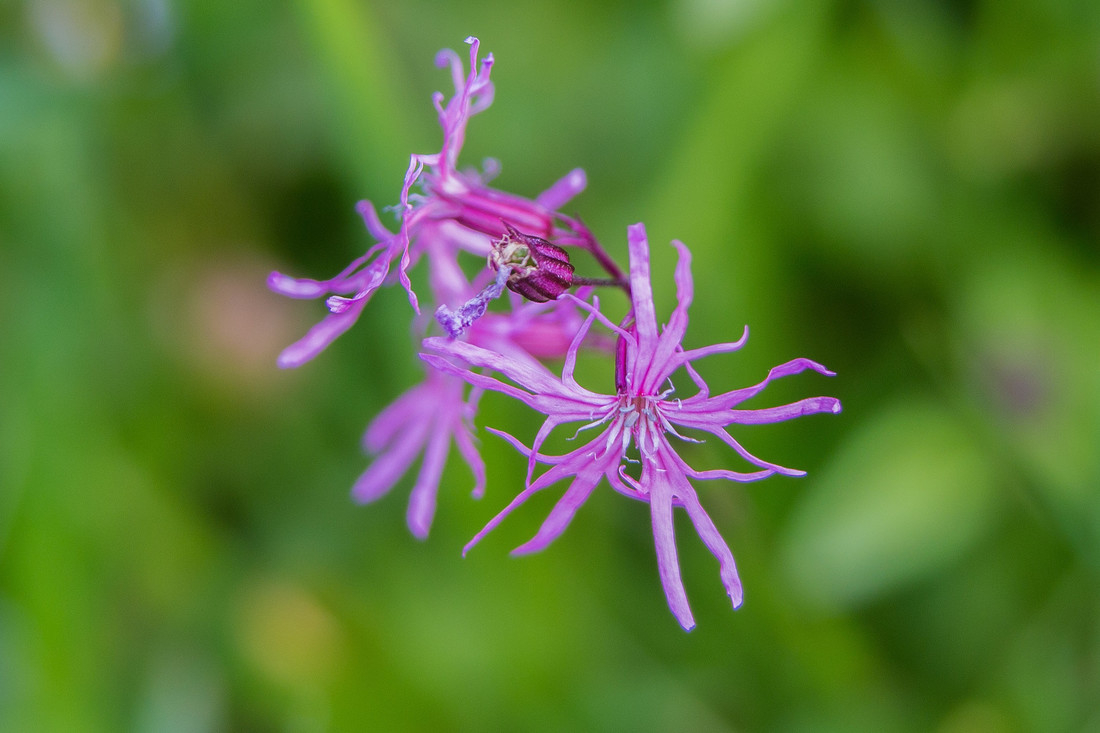
If you visit a WWT reserve in the spring or summer, you’ll see a huge range of wildflowers blooming. It might seem like they’re growing at random, but this is often far from the case. Dave Paynter, Reserve Manager at WWT Slimbridge, says:
Meadows have to be looked after. If we leave them to their own devices, they will become too fertile and end up as rank grass. So we mow the flower meadows in late summer, and take away all the cut material to a compost heap. If we left it where it was to rot into the soil and add nutrients, more aggressive weeds and grasses would soon take over.
A wildflower is defined simply as a flower that grows in the wild, without seeding or cultivating by people. They’re getting rarer and rarer as more of our land becomes developed and urbanized, and habitats like meadows and wetlands are lost.
So it’s even more important to appreciate our wetland wildflowers! Here is a quick guide to some common (and more uncommon) wetland wildflowers you might see.
Marsh marigold (Caltha palustris)
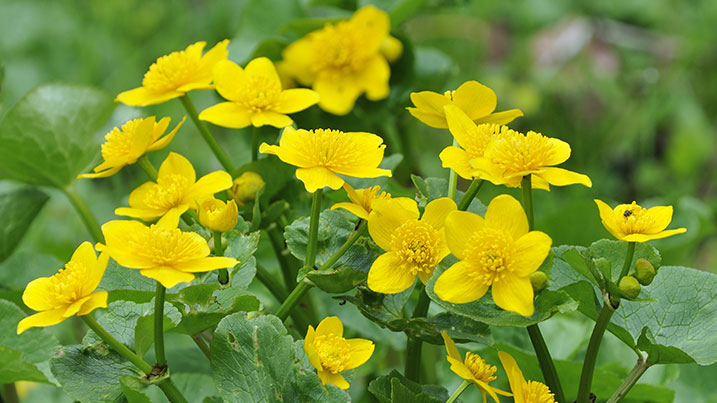
Marsh marigold is like a boggy buttercup, a lover of damp soils from woodland streams to large open wetlands. It blooms early (March to May usually but up to July in some places), so can be seen in wetlands over the summer months. It has large, heart shaped scalloped leaves and yellow petals. It’s one of our most ancient plants, surviving periods of glaciation during the ice age. It has some interesting common names including king cup, Molly blobs and water boots! The flowers produce both nectar and pollen, and along with the other wildflowers in this list is very popular with pollinators.
Devil’s bit scabious (Succisa pratensis)
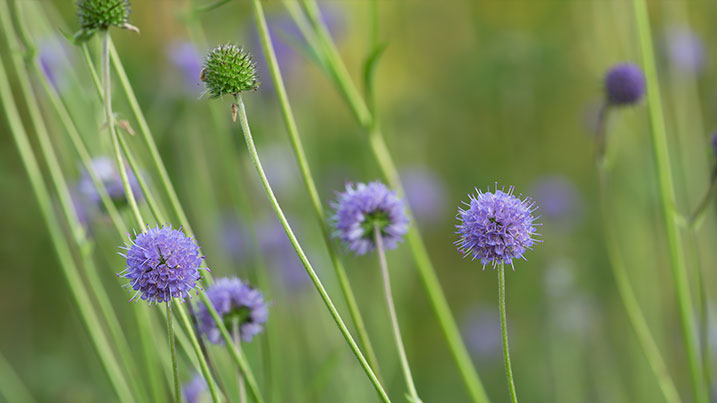
You are most likely to see the nodding lilac-blue flowers of this plant in wet or damp grassland. It is loved by many insects but is best known as the food source of the now threatened marsh fritillary butterfly. It is also a favourite of the Scotch argus butterfly, if you happen to be in Scotland. It’s a good late nectar source for insects, as it flowers in September, but because of the late flowering, it can be a problem for those wanting to cut their grassland. This is why on some nature reserves, it is managed with very light summer grazing.
Devil’s bit scabious has very short roots, and in folklore this was said to be because the Devil became angry with how useful the plant was as a cure for different ailments, and bit off the roots!
Cuckoo flower (Cardamine pratensis)
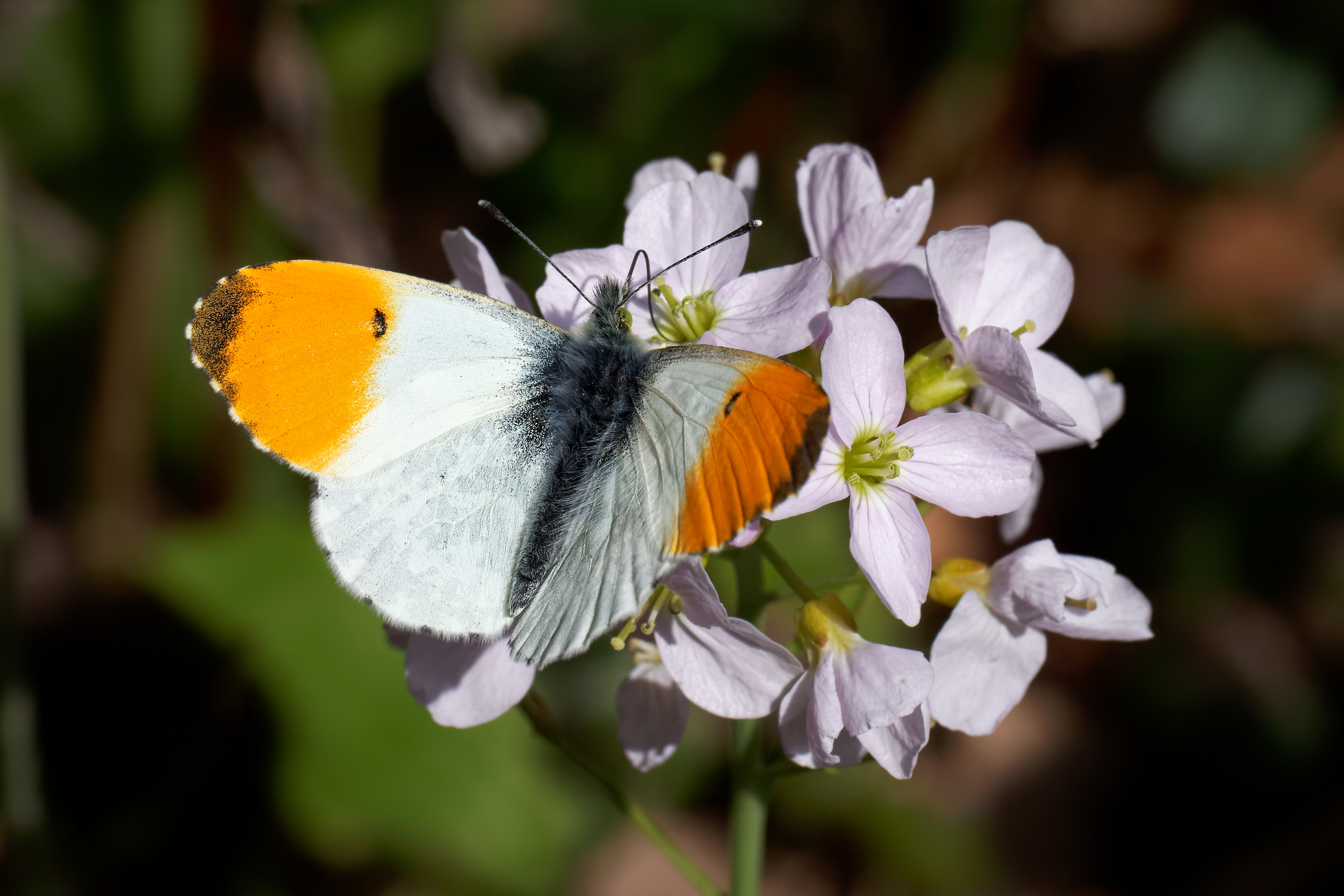
This pretty pink flower heralds the start of spring. You will see it on riverbanks, damp meadows and roadside verges from April. It is named as it flowers with the arrivals of the first cuckoos in spring, and is said to be spookily accurate with the coordination of its blooms with the birds. It is also known as lady’s smock, mayflower and milkmaids. It is the main food plant of orange tip caterpillars, so is an important part of the ecosystem.
Cuckoo flowers are pollinated by bee flies and long-tongued hoverflies, but in very wet areas the plants spread vegetatively (it grows a new plant from a bit of the old one). The flowers of the cuckoo flower vary from lilac through to white, and can vary according to soil pH. In acid conditions, the petals are darker. Who needs litmus when you have nature?
Yellow Flag Iris (Iris pseudacorus)
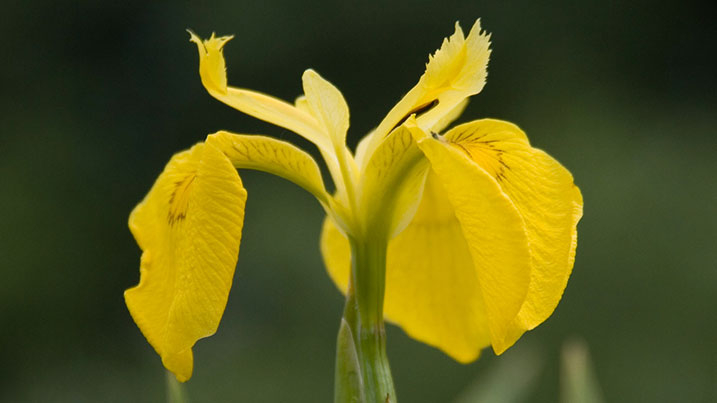
The big, showy giant of UK marginals. It can grow up to 1.5 metres tall and is seen flowering from May to July on lakes, ponds, river margins, wet woodlands, fens, ditches and marshes. The large yellow flowers have an outer ring of three large petals which droop characteristically. The whole plant is a multi-storey home for many species. Emerging froglets love to hide among its rhizome root system, while Odonata nymphs climb up its stem. This plant is a popular choice for growing in garden ponds because of its striking flowers.
The yellow iris is thought by some to be the original 'fleur-de-lis' - a common symbol of heraldry – and was believed to ward off evil when hung in bunches outside front doors. It is also used medicinally for its astringency, to stop blood flow.
Ragged robin (lychnis flos-cuculi)

Ragged robin is one of those plants that’s widespread throughout Britain but not particularly common anywhere. It is generally characterised as a fen plant and flowers from May to July. The flowers are an important source of nectar for butterflies and long-tongued bees. It has a unique way of keeping unwanted trespassers out - preventing ants climbing up its stem with lots of downward pointing, barbed hairs.
Over the last few decades it has suffered a decline as the wet meadows, rush-pastures and fens where it grows have been drained and improved for agriculture. So you can do your bit for plant conservation by growing it at home, especially is you have a damp, sunny spot. The delicate pink flowers sway on tall stems above clumps of dark green leaves and will attract bees and butterflies to your garden.
Common water-crowfoot (Ranunculus aquatalis)
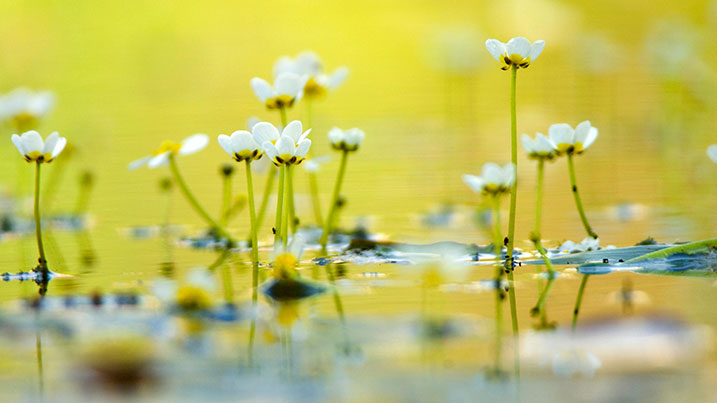
This native oxygenating water plant is a member of the buttercup family. It floats on pond and rivers displaying white, buttercup-like flowers with yellow centres which provide food for bees, butterflies and other insects. A valuable native plant, the floating mats provide egg laying sites for dragonfly, while the larvae use the stems to climb out of the water. The flowers of common water crowfoot provide food which will attract bees, butterflies and other insects. This is a great plant for growing in your garden pond.
Common water crowfoot grows in free-floating mats on still or slow-moving water, which may have inspired its scientific name Ranunculus – meaning ‘little frog’.
Purple loosestrife (Lythrum salicaria)
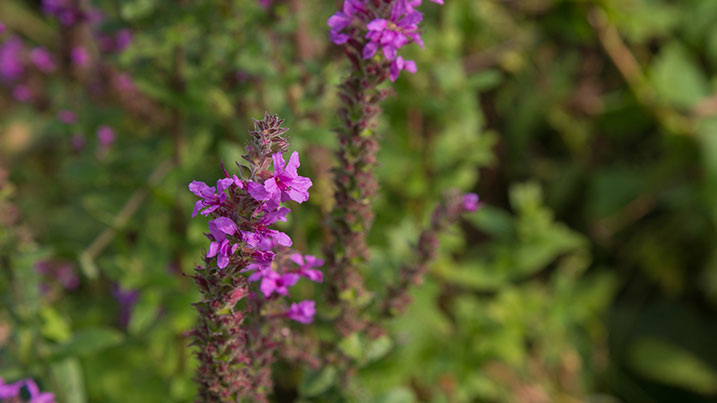
This is one of the most interesting and eye-catching wetland wildflowers we have in the UK. The reddish-purple flowers have six petals and 12 stamens clustered tightly together. There are three different flower types. Each stamen is a different style and length and each flower can only be pollinated by a different flower type. This ensures cross-pollination between different plants, meaning there is greater generic diversity and healthier, er plants.
Because of this, Darwin was particularly interested in this plant and studied it extensively. It’s found in reedbeds, fens, marshes and riverbanks and the magenta flowers attract many different insects. It flowers between June and August, when its nectar becomes a valuable food source for long-tongued insects like red-tailed bumblebees, brimstone butterflies and elephant hawk-moths.
We urgently need to ask for your help to save our wildlife.
As our world strives to come to terms with COVID-19 many of the vulnerable wetland species you’ve just been reading about are at greater risk than ever before.
DONATE


